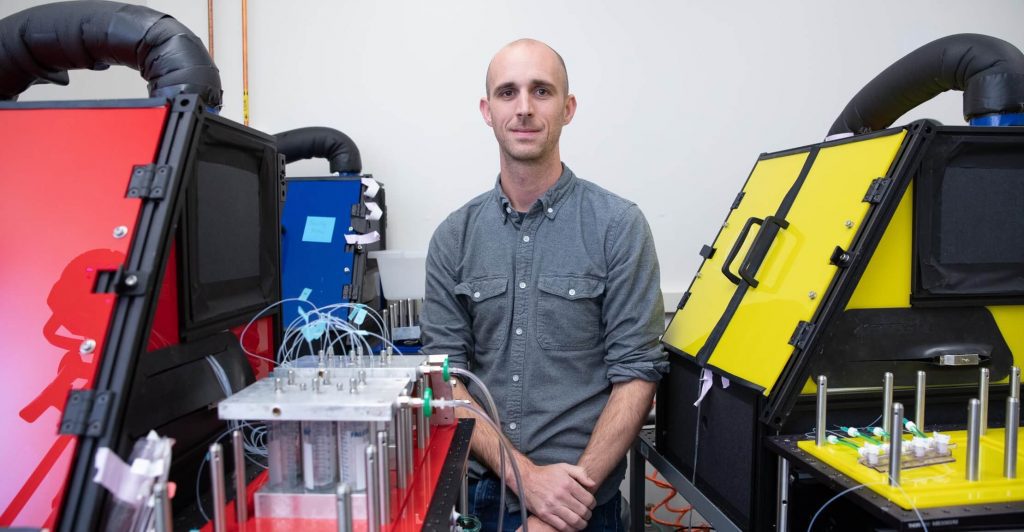Calico scientists in our yeast biology labs, along with the computing and technology groups, are collaborating closely on a long-term project to invent new technology and processes to understand the biology of aging at the cellular level by studying yeast. Understanding how yeast age at the cellular level may provide important insight into how higher-level organisms age.
Prior to refining this process, yeast biologists had to isolate and count “by hand” the number of times a mother cell divided, an extremely inefficient and time-consuming task. Calico scientists collaborated to develop two technologies to overcome a major challenge in studying yeast replicative lifespan — the difficulty in separating mother cells from daughter cells — and did so at a scale that enables genome-wide characterization of the aging process.
The Miniature-chemostat Aging Device (MAD) platform allows our scientists to purify 50 million old cells — a number equivalent to the US population of the age of 65 — in a single test tube, facilitating efforts to characterize the molecular phenotypes of aging. Additionally, a microfluidics-based platform allows our scientists to longitudinally observe the entire aging process in single cells — hundreds of thousands each week — allowing them to screen for lifespan-extending modifications that can increase the yeast lifespan beyond that observed under normal laboratory conditions (~25 divisions).
Calico’s computer vision and machine learning experts made key advances that are critical for these technologies, using computer vision pipelines to recognize when a mother cell divides from time lapse images or to measure the age of a cell directly from static images. These automated analyses dramatically increase the throughput of these tools, allowing our scientists to explore more of the genetic and environmental landscape that governs how single cells age.
